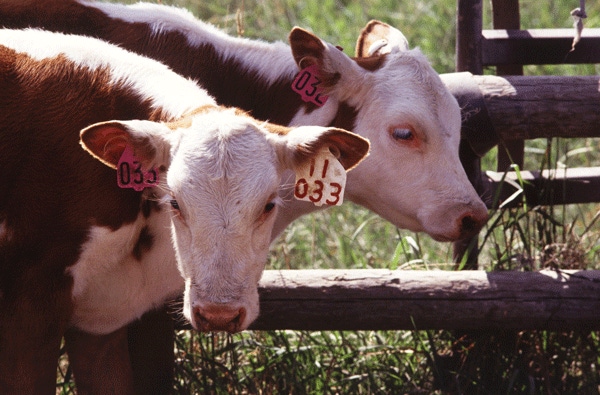
• Analysts generally believe five market factors are expected to have the biggest impact on cattle prices.• Limited cattle inventories are expected to result in reduced cattle slaughter in 2011.• Increased competing meat supplies, mostly increased poultry production, are in a position to potentially temper retail beef prices somewhat.
December 17, 2010

Cattle prices are approaching record levels in several markets at the end of 2010 and are likely to take producers, packers and the rest of the cattle industry into uncharted waters in the coming year.
Analysts generally believe five market factors are expected to have the biggest impact.
First, beef demand. Projected decreases in beef production in 2011 will almost certainly pressure wholesale and retail beef prices higher.
“The ability to pass on the impacts of reduced beef supplies will depend on continued recovery in beef demand,” said Derrell Peel, Oklahoma State University Cooperative Extension livestock marketing specialist. “Recessionary weakness continues to limit middle meat demand, though signs of recovery are evident at the end of 2010.”
The news is not all bad for consumers, though. Increased competing meat supplies, mostly increased poultry production, are in a position to potentially temper retail beef prices somewhat.
Second, does herd expansion happen or not? Limited cattle inventories are expected to result in reduced cattle slaughter in 2011. The magnitude of feeder supply squeezing will depend on the extent of heifer retention in the coming year.
Limited heifer retention
“Though not yet confirmed by data, there are indications at the end of 2010 of limited heifer retention,” Peel said. “The question of herd rebuilding will determine just how tight cattle supplies are in 2011 and also the timetable for potential increases in beef production in coming years.”
Third, crop conditions in 2011. A 2010 corn crop that fell just short of record levels was enough to push corn prices sharply higher. Projected crop-year ending stocks are at levels that make the feed grain markets extremely sensitive to anticipated grain supplies.
“Crop markets are likely to be especially focused on evolving crop conditions that will have a large impact on overall feed grain price levels, as well as increased volatility from the pre-planting period through harvest,” Peel said. “Crop prices and volatility will continue to have a big impact on livestock industries in general and in cattle, especially on the feedlot sector.”
Fourth, underlying support from international trade. Strong beef exports provided critical support for cattle markets in 2010. Beef exports are expected to increase again in 2011, albeit at a more modest rate of gain. Global demand for beef is expected to continue growing though country specific economic conditions.
“Currency exchange rates will have a large impact on specific trade flows,” Peel said. “Beef exports and imports help the beef industry to improve domestic beef demand by changing the mix of products to better meet the preferences of U.S. beef consumers, while also increasing total value to the industry.”
Finally, forage conditions will play a significant role, as usual. Beef industry responses to the twin forces of limited cattle numbers and high feed grain prices depend on forage use.
“There are continued strong incentives for increased cow-calf production and for forage-based stocker production,” Peel said. “The quantity and quality of forage will have a big impact on both the level of production and the timing of feeder cattle flows in the coming year.”
Currently, the La Niña weather pattern is producing dry conditions across much of the Southern Great Plains and Southeast regions of the United States.
“Should dry conditions continue to develop and extend into the growing season, the impact on cow-calf production and summer grazing programs could be very significant,” Peel said. “Widespread drought in major cattle regions could offset producer intentions with respect to possible herd rebuilding.”
You May Also Like



